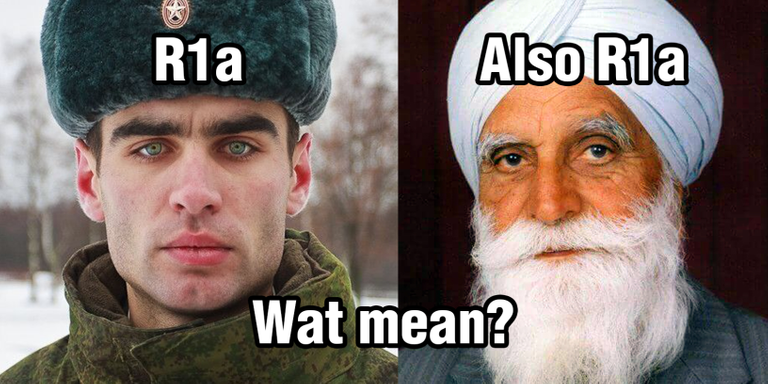 Here’s a short explanation of what Haplogroups are and what they can tell us about genetics and ancestry. With a few examples for reference:
Here’s a short explanation of what Haplogroups are and what they can tell us about genetics and ancestry. With a few examples for reference:
Contents
- What is a haplogroup?
- What can we learn from haplogroups?
- Real-life examples
- Summary
What is a haplogroup?
A haplogroup is a very small portion of our DNA that changes very little over a very long period of time. Remaining consistent as it is passed from generation to generation.
Haplogroups are gender-specific and are passed down patrilineally or matrilineally. So, they can be used to trace male and female lineages over many thousands of years.
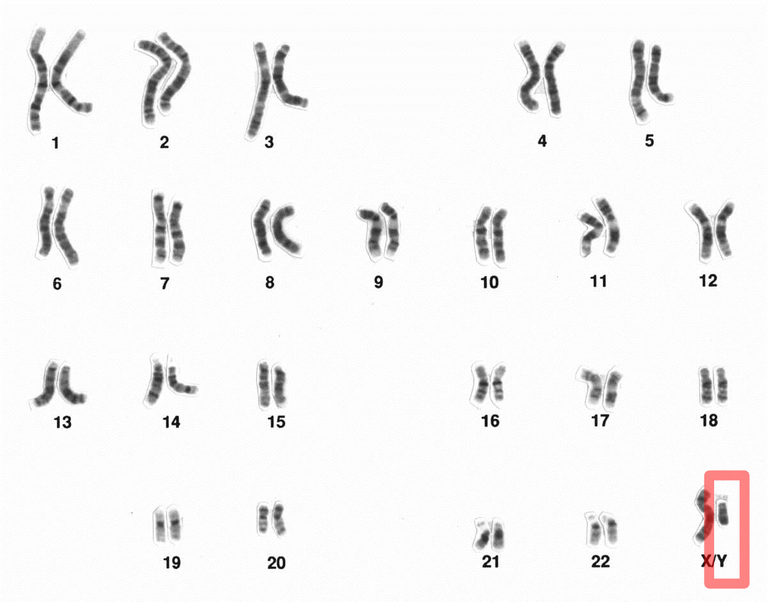 The Y-DNA (male) haplogroup is determined by the Y-chromosome. The male expression of the 23rd chromosome which determines whether humans are male (XY) or female (XX). This means that daughters do not inherit their father’s haplogroup, as they have no Y chromosome. Similarly, sons do not inherit their maternal grandfather’s haplogroup (mother’s father), and daughters do not inherit their paternal grandmother’s haplogroup (father’s mother).
The Y-DNA (male) haplogroup is determined by the Y-chromosome. The male expression of the 23rd chromosome which determines whether humans are male (XY) or female (XX). This means that daughters do not inherit their father’s haplogroup, as they have no Y chromosome. Similarly, sons do not inherit their maternal grandfather’s haplogroup (mother’s father), and daughters do not inherit their paternal grandmother’s haplogroup (father’s mother).
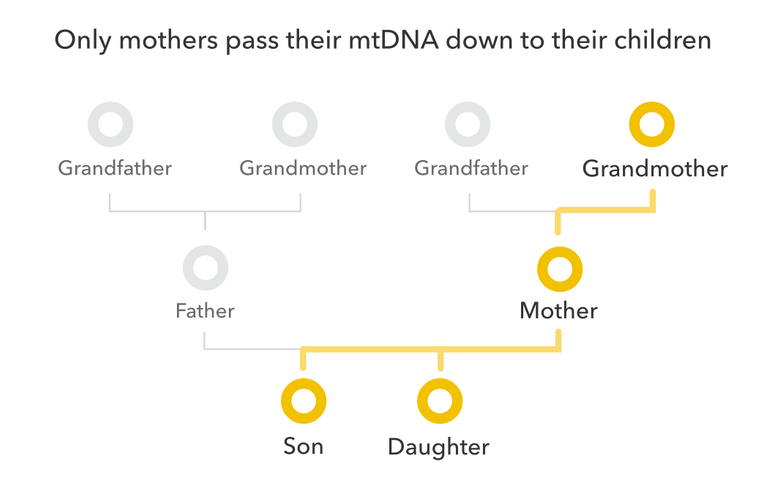
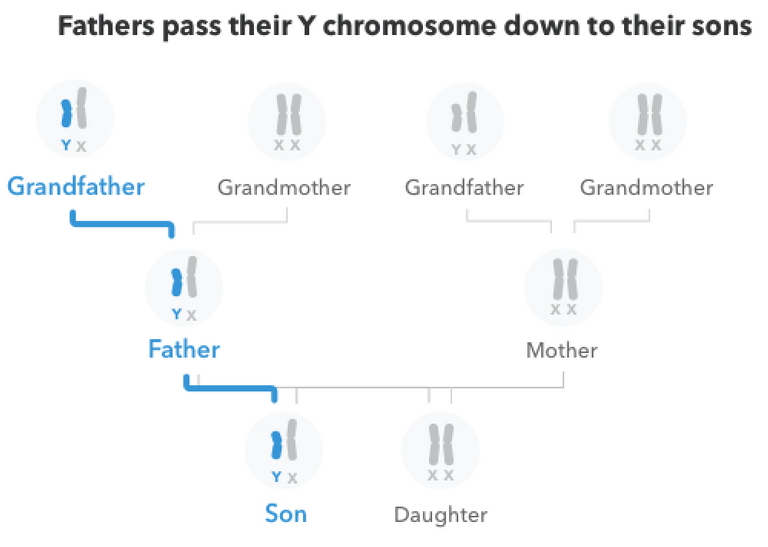
What can we learn from haplogroups?
Haplogroups (generally) do not impact an organism’s phenotype, meaning that they don’t alter how we look, behave, think, etc.
They do not tell us anything about our autosomal DNA, the sum-total of our DNA (which does impact our phenotype).
Thus, they don’t necessarily tell us anything about an individual’s race, even though specific haplogroups are prominent among specific racial and ethnic populations.
Dominant haplogroup among native populations: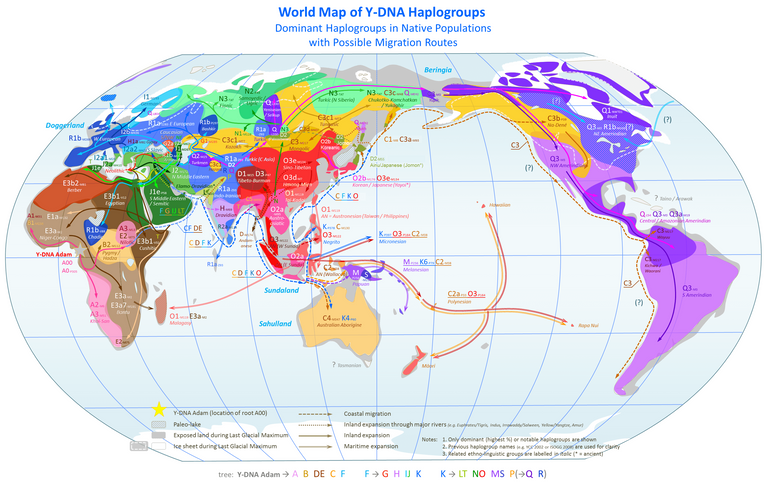 Consider the following hypothetical example:
Consider the following hypothetical example:
If one man, who was genetically 100% Northwest European, moved to a Central African country and impregnated one thousand women, who were all genetically 100% African, any sons born would have his Y-DNA haplogroup, e.g., haplogroup R1b, which is most common in Western Europe.
These R1b-carrying sons would be genetically/racially 50% European and 50% African. If they went on to reproduce exclusively with genetically 100% African women, their sons would be 25% European and 75% African, but they would still carry the R1b haplogroup.
If this process of mixed-race male offspring reproducing with 100% African women continued, by the tenth generation, the children would be 0.098% white, but they would still have the R1b haplogroup.
If the original man’s sons were as reproductively successful as he was, with each son impregnating one thousand women, the “European” haplogroup, R1b, could come to dominate the entire country within a few generations (country’s total population size).
The haplogroup would have no bearing on the population’s race or ethnicity (they would not look racially European in the slightest) but it would tell us a pretty interesting story about the historic migration and subsequent breeding patterns that formed their 99.902% African and 0.098% European population.
Calculations, for reference;-
1 generation: 50% white
2 generations: 25% white
3 generations: 12.5% white
4 generations: 6.25% white
5 generations: 3.13% white
6 generations: 1.56% white
7 generations: 0.78% white
8 generations: 0.39% white
9 generations: 0.195% white
10 generations: 0.098% white
Real-life examples
The above example is a hyperbolic hypothetical, but similar situations have occurred in the past.
During the Proto-Indo-European expansion, Indo-European males (mostly carrying R1a and R1b haplogroups) near-exterminated the male lineages of Early European Farmers in Western, Central, and Southern Europe. Resulting in the near-extinction of Early European Farmer-related Y-DNA haplogroups, such as G and J.
However, the haplogroups associated with European hunter-gatherers, such as I1 and I2, were not exterminated. In fact, these hunter-gatherer associated haplogroups are even more prevalent in Scandinavia than R1a and R1b. Despite the fact that Scandinavians have the highest proportions of Proto-Indo-European ancestry in Europe.
From this, we can infer that the interactions between European hunter-gatherers and Indo-Europeans were significantly different from those between Indo-Europeans and European Farmers — which is also supported by archaeological evidence.
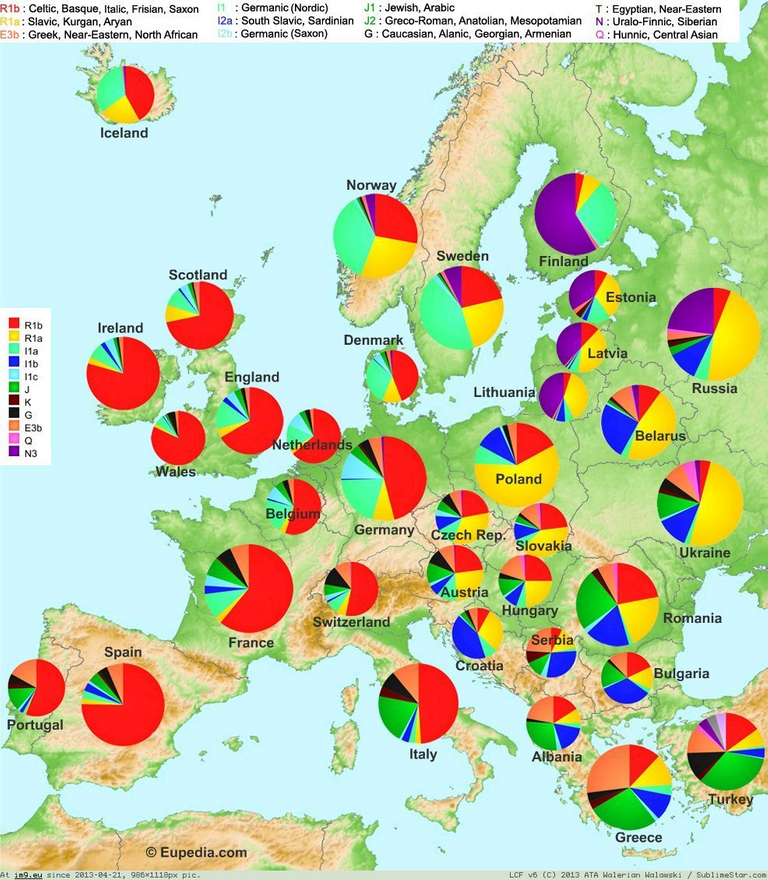
Compare haplogroups above to autosomal DNA below:
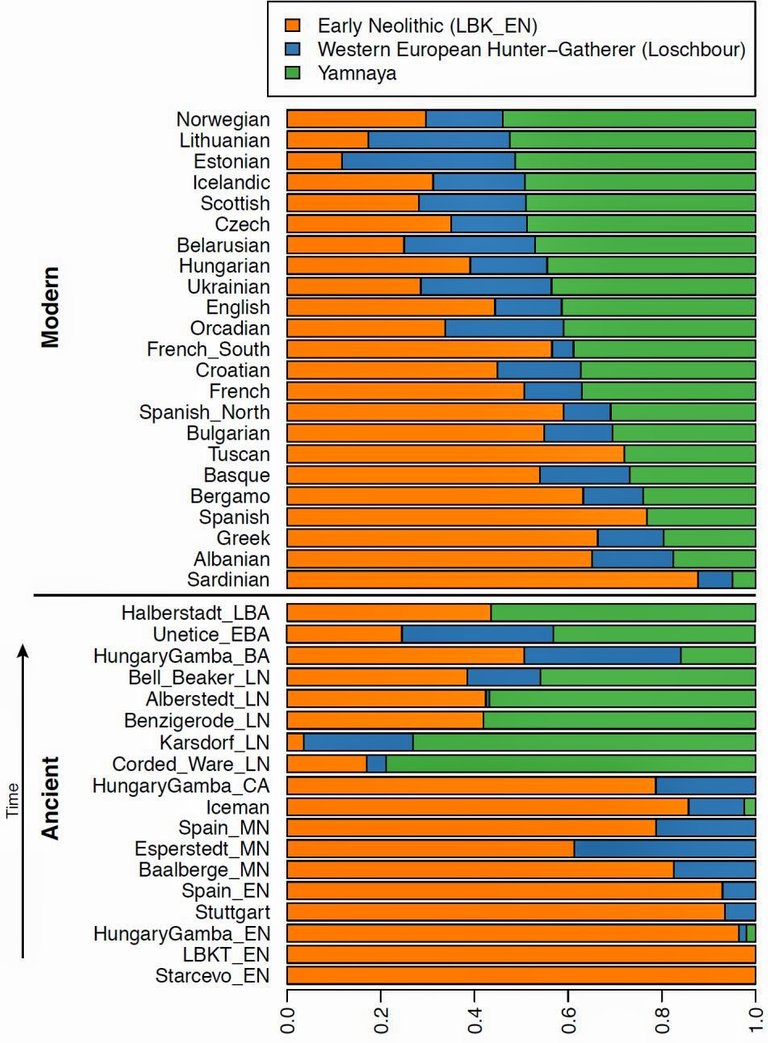 The haplogroup R1 (which is ancestral to R1a and R1b) is also found in high frequencies among Native Americans. It was initially suggested that they inherited this haplogroup via intermixing with European settlers. However, new genetic evidence has proven that Amerindians inherited the R haplogroup from a previously undiscovered ghost population, known as the Ancient North Eurasians, among whom the oldest example of the basal ‘R’ haplogroup was discovered (just R, not R1, R1a, R1b, etc.).
The haplogroup R1 (which is ancestral to R1a and R1b) is also found in high frequencies among Native Americans. It was initially suggested that they inherited this haplogroup via intermixing with European settlers. However, new genetic evidence has proven that Amerindians inherited the R haplogroup from a previously undiscovered ghost population, known as the Ancient North Eurasians, among whom the oldest example of the basal ‘R’ haplogroup was discovered (just R, not R1, R1a, R1b, etc.).
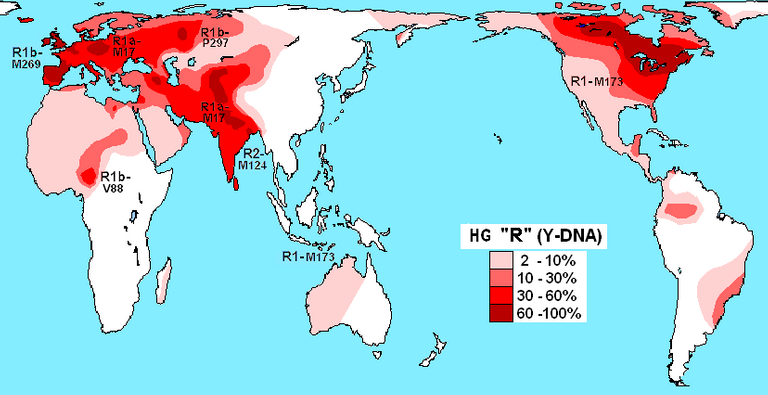
The Ancient North Eurasians were a Caucasoid peoples who inhabited the majority of Ice Age Siberia. They are directly and indirectly ancestral to almost every population in the Northern Hemisphere, including Europeans. Modern Europeans are 7% to 25% Ancient North Eurasian (South to North gradient), and modern Amerindians are 14% to 38% Ancient North Eurasian. Proto-Indo-Europeans were around 50%.
The map below displays genetic affinity to Ancient North Eurasian (MA-1) ancestry in modern populations.
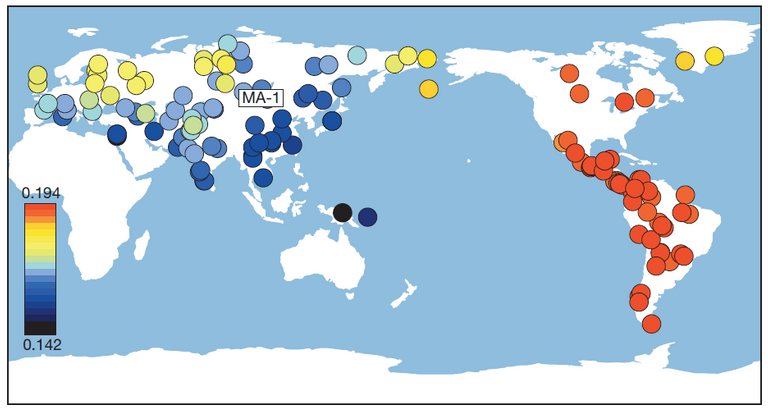 Summary:
Summary:
- Haplogroups are tiny parts of our DNA that change very little over a long period of time.
- Due to this fact, haplogroups are useful for geneticists to track migration and breeding patterns throughout history.
- Haplogroups are male and female specific. A woman cannot pass on a male haplogroup, and a man cannot pass on a female haplogroup.
- Haplogroups don’t necessarily tell us anything about an individual’s race, even though racial and ethnic populations tend to be dominated by specific haplogroups.
- E.g., having a stereotypically East Asian haplogroup while being genetically 100% European does not make you non-European, and so on.
Congratulations @hexzerg! You have completed the following achievement on the Hive blockchain and have been rewarded with new badge(s):
Your next target is to reach 100 upvotes.
You can view your badges on your board and compare yourself to others in the Ranking
If you no longer want to receive notifications, reply to this comment with the word
STOPCheck out the last post from @hivebuzz:
Support the HiveBuzz project. Vote for our proposal!
i dont see race as genetic like that, its literaly a culture you can just start morphing into, were probaly flat earth simulations of the old real round earth so we probly dont have dna anymore
So, someone from Nigeria can move to Japan and become Japanese? There is obviously a genetic component to race & ethnicity. I would agree with you that culture/ethnicity isn't solely genetic but nothing wrong with studying hbd(human biodiversity). We are told all the time that diversity is great and our strength. Shouldn't we celebrate it by studying our diversity?
yes they use thesse med beds in Japan to change their race with reverse mris and ultrasound
for the ancestry.com eosio telos racial tipit.io edenos airdrop
imagine all the races competing in crypto for @mughat rational self interest ... with race based airdrops